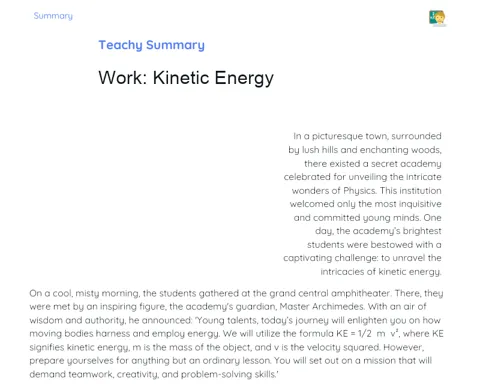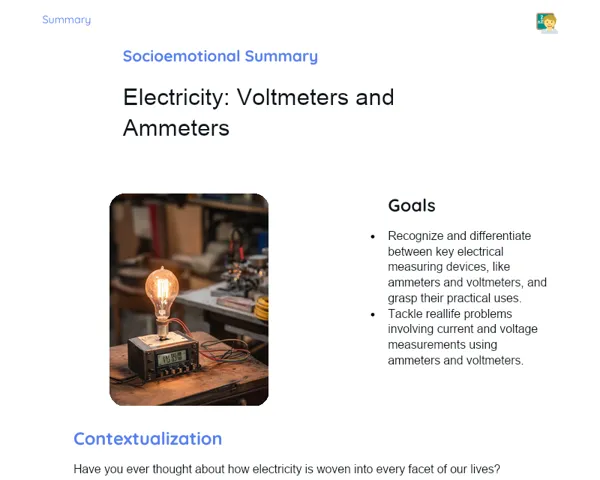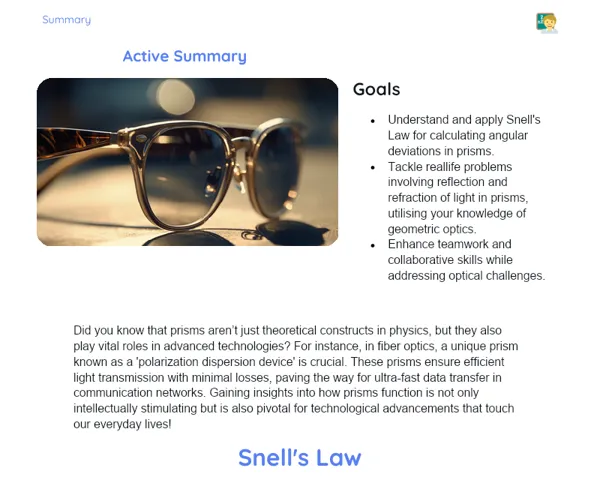Summary Tradisional | Dynamics: Newton's 3rd Law
Contextualization
Newton's Third Law, often called the Law of Action and Reaction, is a foundational concept in classical mechanics. It states that for every action, there is an equal and opposite reaction. Simply put, when body A applies a force on body B, body B pushes back with an equal force in the opposite direction. This principle is vital for understanding how forces interact and how movements in our everyday lives are generated and balanced.
For example, think of two friends skating on ice. When one friend pushes the other, they slide off in opposite directions. The push creates an equal and opposite force, demonstrating the law in action. Another example is rocket launches, where the gases that rush out backward provide a reaction force that propels the rocket forward into space. Newton's Third Law is not just about explaining simple phenomena; it plays a crucial role in advanced technologies as well.
To Remember!
Introduction to Newton's Third Law
Newton's Third Law is one of the three basic laws of classical mechanics articulated by Isaac Newton. This law asserts that for every action, there is an equal and opposite reaction. It can be mathematically represented as F₁ = -F₂, where F₁ and F₂ signify action and reaction forces.
A key feature of this law is that action and reaction forces come in pairs and act on different bodies. For instance, when you push against a wall, you're applying force to the wall (action) while the wall applies an equal force back on you (reaction).
This relationship helps us understand how objects interact in our daily experiences. It's crucial to remember that these forces happen at the same time and are always equal in strength, indicating there’s no lag between action and reaction.
Grasping Newton's Third Law is vital for analyzing and predicting how objects will behave, whether it’s as simple as pushing a chair or as complex as launching rockets.
-
Newton's Third Law states that for every action, there is an equal and opposite reaction.
-
Action and reaction forces occur in pairs and act on different bodies.
-
These forces happen simultaneously and are of equal magnitude.
Action and Reaction in Daily Life
You can see Newton's Third Law reflected in many everyday situations. A classic case is when you push against a wall: the force you apply on the wall is the action, while the wall exerts a reaction force back on you. Both forces have equal strength but act in opposite directions.
Another common example is when rockets are launched. As the engines push hot gases backward, a reaction force pushes the rocket forward, enabling its ascent. Without this reaction, a rocket wouldn't be able to move.
Even the interaction between your feet and the ground while walking exemplifies this law. When you push backward against the ground, it pushes you forward, allowing you to walk. These interactions demonstrate how Newton's Third Law is present in various activities we do every day, explaining how different forces work together to influence our movements and balance.
-
Pushing a wall illustrates action and reaction forces.
-
Rocket launches depend on the principles of Newton's Third Law.
-
Walking is facilitated by the action and reaction forces between your feet and the ground.
Examples of Forces and Their Reactions
To identify pairs of action and reaction forces, it's vital to analyze how different objects interact. For example, the weight force is what Earth pulls on an object, bringing it down. The reaction of this force is what the object pulls up on the Earth, although it’s too slight to noticeably move the Earth due to its massive size.
Another illustration is the normal force, the force a surface applies on an object resting on it. If you set a book on a table, the book's weight exerts a downward force on the table, while the table provides an upward reaction force maintaining balance.
Understanding these action and reaction forces is essential for comprehending how objects interact and achieve equilibrium in various situations. Recognizing these forces allows us to solve practical difficulties and predict how objects behave in stable systems.
This comprehension is vital for analyzing physical systems and inventing technologies that depend on force balance, like bridges, buildings, and vehicles.
-
The weight force and its reaction exemplify action and reaction forces.
-
The normal force counters the weight of an object on a surface.
-
Recognizing action and reaction forces is key to understanding equilibrium systems.
Impact of Newton's Third Law in Engineering and Technology
Newton's Third Law is crucial for the advancement of numerous modern technologies. In aerospace engineering, for instance, understanding the forces of action and reaction is vital for designing rockets and satellites. When a rocket propels gases backward, the reaction force sends the rocket forward, making it possible for it to ascend and navigate through space.
In vehicle design, this law helps comprehend the interaction between tires and the road surface. When accelerating, tires push back against the road, while the road pushes the tires forward, driving the vehicle ahead.
Additionally, propulsion systems like jet engines and propellers harness this law; the expulsion of air or water generates a reaction force moving the vehicle.
These examples illustrate that Newton’s Third Law is fundamental in engineering and technology, leading to innovative and efficient solutions for both transportation and space exploration.
-
Newton's Third Law is essential for designing rockets and satellites.
-
In vehicle mechanics, the interaction between tires and the road utilizes Newton's Third Law.
-
Propulsion systems such as jet engines and propellers rely on Newton's Third Law to achieve motion.
Key Terms
-
Newton's Third Law: Principle stating that for every action, there is an equal and opposite reaction.
-
Action Force: The initial force exerted by one body on another.
-
Reaction Force: The force of equal strength and opposite direction that responds to the action force.
-
Weight Force: The gravitational force that Earth applies on an object, pulling it downward.
-
Normal Force: The force exerted by a surface acting perpendicular to an object in contact with it.
-
Force Equilibrium: A state where action and reaction forces balance each other, resulting in a static system or steady motion.
Important Conclusions
Newton's Third Law, or the Law of Action and Reaction, is a key principle in classical mechanics that describes how forces interact with each other. It tells us that for every action, there is an equal and opposite reaction. Understanding this law is essential for gaining insights into how movements are created and balanced in our day-to-day lives.
The practical examples discussed, like pushing a wall, rocket operation, and walking, show how Newton's Third Law is woven into our daily activities. These instances clarify the application of action and reaction forces and how they shape our movement and equilibrium.
Furthermore, Newton's Third Law significantly influences engineering and technology, being crucial for designing rockets, vehicles, and propulsion systems. Recognizing and applying this law facilitates the development of innovative and effective solutions, showcasing the importance of what we've learned in this lesson.
Study Tips
-
Review practical examples discussed in class, such as pushing a wall and how rockets function, to solidify your understanding of Newton's Third Law.
-
Practice identifying action and reaction forces by solving relevant problems across different scenarios.
-
Explore additional resources on Newton's Third Law and its relevance to engineering and technology to expand your grasp on the subject.



